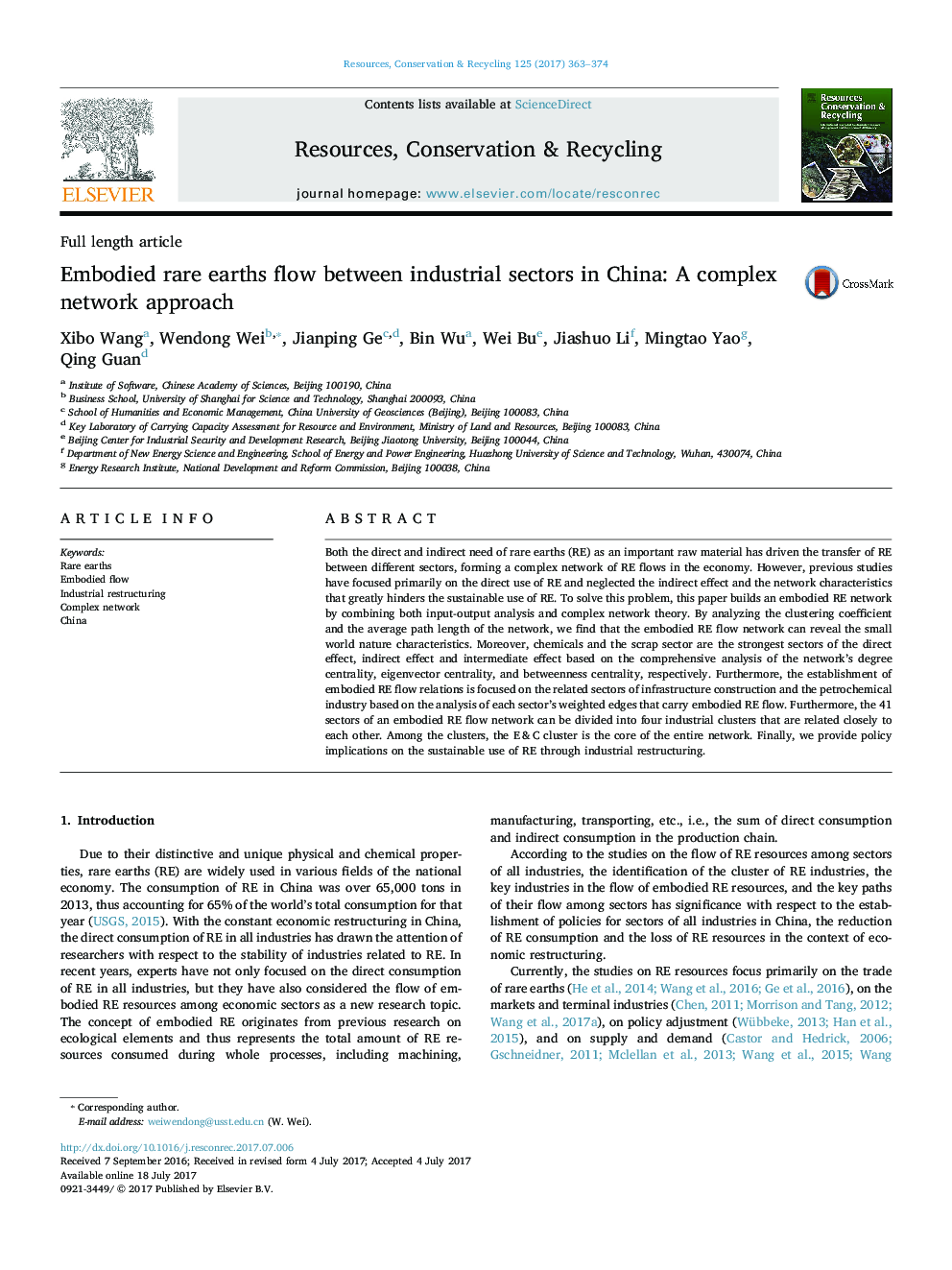| کد مقاله | کد نشریه | سال انتشار | مقاله انگلیسی | نسخه تمام متن |
|---|---|---|---|---|
| 5118675 | 1485667 | 2017 | 12 صفحه PDF | دانلود رایگان |
- The ERFN is constructed with 41 sectors based on input-output table of China.
- The small-world-nature ERFN shows a disturbance in a sector can soon affect others.
- The sectors of Chemicals and other manufacturing products show the biggest impact.
- 41 industrial sectors in the ERFN form four industrial clusters.
- The cluster of energy and chemical industry is the core cluster of ERFN.
Both the direct and indirect need of rare earths (RE) as an important raw material has driven the transfer of RE between different sectors, forming a complex network of RE flows in the economy. However, previous studies have focused primarily on the direct use of RE and neglected the indirect effect and the network characteristics that greatly hinders the sustainable use of RE. To solve this problem, this paper builds an embodied RE network by combining both input-output analysis and complex network theory. By analyzing the clustering coefficient and the average path length of the network, we find that the embodied RE flow network can reveal the small world nature characteristics. Moreover, chemicals and the scrap sector are the strongest sectors of the direct effect, indirect effect and intermediate effect based on the comprehensive analysis of the network's degree centrality, eigenvector centrality, and betweenness centrality, respectively. Furthermore, the establishment of embodied RE flow relations is focused on the related sectors of infrastructure construction and the petrochemical industry based on the analysis of each sector's weighted edges that carry embodied RE flow. Furthermore, the 41 sectors of an embodied RE flow network can be divided into four industrial clusters that are related closely to each other. Among the clusters, the E&C cluster is the core of the entire network. Finally, we provide policy implications on the sustainable use of RE through industrial restructuring.
Journal: Resources, Conservation and Recycling - Volume 125, October 2017, Pages 363-374
